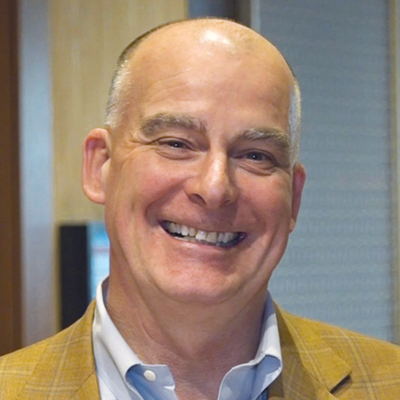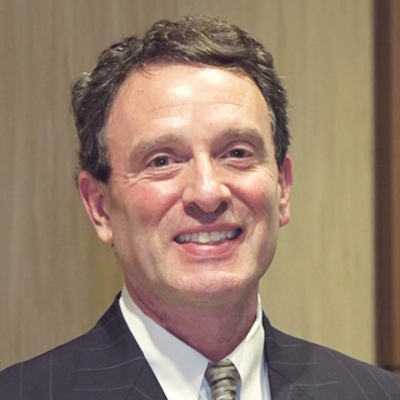Regulation: Life Insurance
Tapping a New Resource
Electronic health records set to turbocharge life insurance underwriting.
- Lee McDonald
- February 2020
-





Colin Devine, principal, C. Devine & Associates, and David Dorans, chief executive officer, Clareto, said accessing information found in health information exchanges, with permission, will enable life insurers to make faster, more accurate underwriting decisions.
Devine and Dorans spoke with AMBestTV at the annual conference of the National Council of Insurance Legislators, held in Austin, Texas.
Following is an edited transcript of the interview.
What is the state of life products and life underwriting in the U.S.? Where does it seem to be headed, and is it headed anywhere in particular?
Devine: It's moving forward slowly. A big problem with life underwriting is that the process takes too long and it's too invasive, and technology we think certainly can materially speed that up.
The key to that is reconverging the life insurance industry and the health insurance industry because electronic medical records really are the keystone that underpin both.

A big problem with life underwriting is that the process takes too long and it’s too invasive, and technology we think certainly can materially speed that up.
Colin Devine
C. Devine & Associates
A lot of insurtechs are moving into this space, and they all talk about accelerated underwriting and some of the algorithms and the AI that they're using. What's the real key to making that work?
Devine: The key to making that work is having electronic health records. You've got to be able to get a record that has data that you can rely on, and you can get it fast.
What is better access to this information?
Dorans: It's not new information. It's the information that we traditionally get in the industry. It's significantly improving the model that we use to get the information and changing a process that takes weeks and involves literally the use of a fax machine into much more of an automated process that can be done in seconds or minutes.
How does that work?
Dorans: It works by tapping into organizations that have access to the data and that have a charter that allows them to release that data with proper authorization from a client.
There's a couple of different models that are available. One, we are the most bullish on are organizations known as health information exchanges. Most of these are statewide organizations that were designed and built for the concept of interoperability.
They were built for treatment purposes. They were built so that if you showed up in an emergency room at midnight, on a Saturday, the physicians that were taking care of you would have access to your records.
They were also built to try and provide savings for the health market, so that if you had an MRI done on Monday, there's no need to have one done again on Thursday. We're really tapping into the organizations that were built on the health care side, but using those same technical capabilities that they built to the advantage of life insurers.
Has this information ever been used for insurance purposes?
Dorans: It has not. We were the first ones to bring this out. Clareto's been in business now for a little under two years. We own and operate our own HIE in the central Virginia area.
We had some people that saw what was available in the health insurance exchanges and had some life insurance experience, the light bulb went off that there's a real opportunity here that could really change underwriting.
Any doctor in a region who participates in a health information exchange, it's like MIB or any other exchange organization. If you're a part of the exchange, if you want to get data out of the exchange, you have to make your data available to the exchange.
We'll work with exchanges around the country. The first one we went live with was the state of Colorado. The state agreed that with proper authorization, they would make their data available.

We had some people that saw what was available in the health insurance exchanges and had some life insurance experience, the light bulb went off that there’s a real opportunity here that could really change underwriting.
David Dorans
Clareto
That made data available for any doctors or any hospitals across the state of Colorado that participated. We went from zero coverage to 75% coverage statewide in Colorado in a matter of minutes when we flipped the switch and turned them on.
We're traveling around the country right now lining up other health information exchanges to try and build out our network.
Is any of this information making its way to insurers yet?
Devine: It absolutely is. The insurers are starting to adopt this. Underwriting is certainly for most insurance companies the most conservative part of the company. When they make decisions, they have to live with it for 50 years.
What Dave's company is doing is just speeding up the process. It can take easily three months to get a life insurance policy issued, and clearly, today, that's a problem. Of that three months, about 10 hours you spend underwriting. The rest is spent tracking down the record, usually the fax or the mail, and doing the paramed exam.
Dave's company can deliver that record in under a minute. That shrinks that issue time dramatically, and that's what insurers are seeing. They have to get a lot more efficient because if you look at where interest rates are, they're under a lot of earnings pressure from low rates. They've got to get more efficient and better at what they do.
That's also how you're going to grow sales. If you make it easier to buy a life policy, the more people are going to do it.
Is anybody backing you in terms the insurance industry investing in you in any way, or do you see them pretty much as clients?
Dorans: Right now, it's venture capital funded, but we've actually had a number of insurance companies who have venture funds have conversations with us. They're really excited about this idea because they, more than a traditional venture capital fund, can really see the potential benefits of this and see that they can win on both sides of the equation.
If all goes well, what kind of time frame are we talking about? When might this actually be in widespread use?
Devine: It's certainly coming up real-time now. There are companies that are starting to do this. I think we'll see it over the next probably two to three years.
If you look back using our X data or prescription data, it really developed over the last 10 years and now that's standard. I certainly think probably within three to five years this will be standard on every insurance application because it's just too easy, it's just too fast. It allows for better risk selection and it allows the policy to get issued a lot faster.
Dorans: When we started this, if you think about, it was a classic chicken-or-egg situation. The idea made all the sense in the world, and you went to insurers and said, “What do you think about this idea? Do you want to sign up?” And they said, “What data do you have?”
Then you went to the data suppliers and said, “Hey, look at this great idea. We can connect you,” and they said, “What insurers do you have?” You get kind of stuck.
It's taken a year or a year and a half to cross that bridge, but now we've got some mainstream insurers participating. We've got some data suppliers participating, and we expect the next rounds of progress will go significantly more quickly.



























